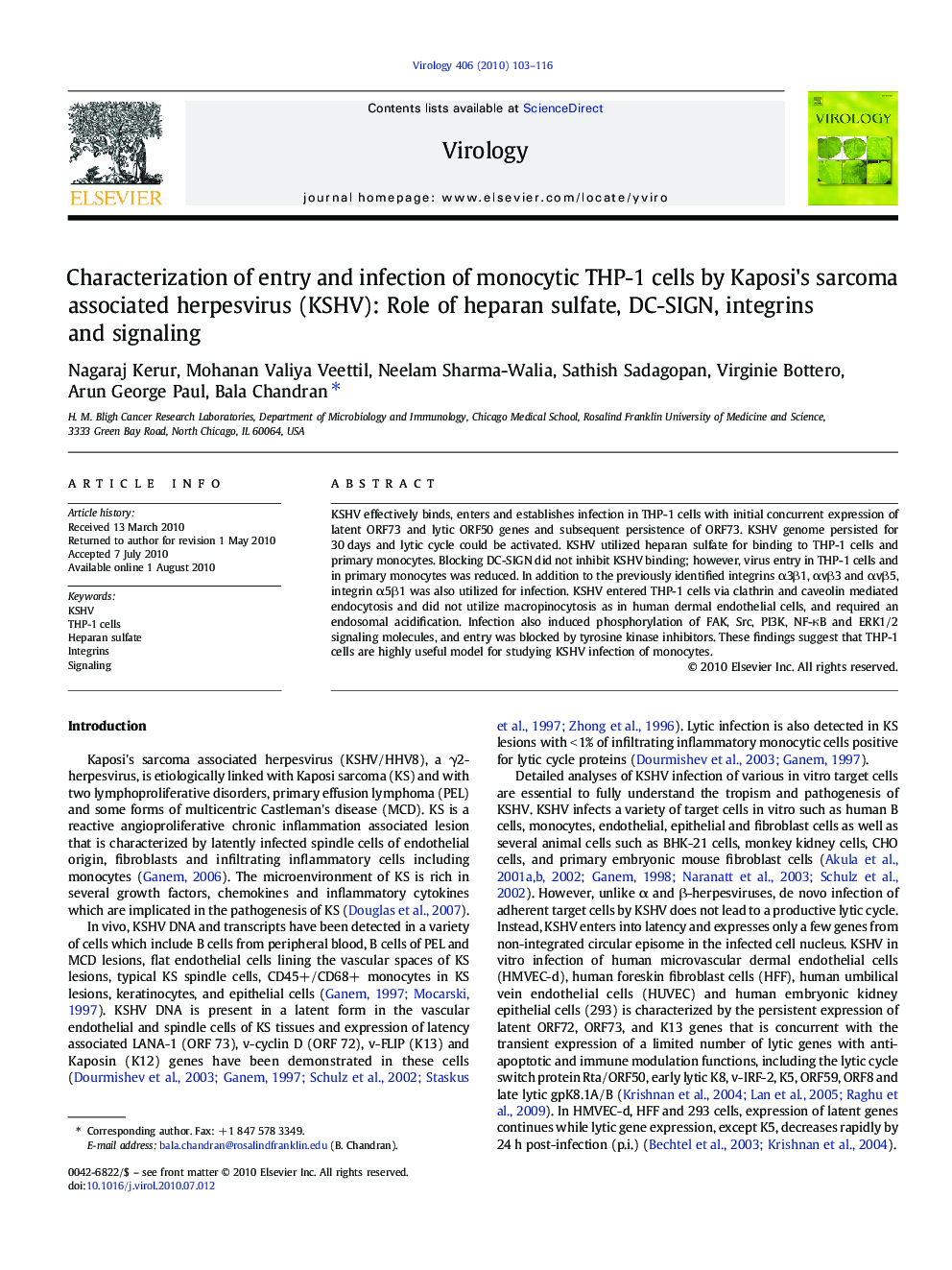| Article ID | Journal | Published Year | Pages | File Type |
|---|---|---|---|---|
| 3425295 | Virology | 2010 | 14 Pages |
KSHV effectively binds, enters and establishes infection in THP-1 cells with initial concurrent expression of latent ORF73 and lytic ORF50 genes and subsequent persistence of ORF73. KSHV genome persisted for 30 days and lytic cycle could be activated. KSHV utilized heparan sulfate for binding to THP-1 cells and primary monocytes. Blocking DC-SIGN did not inhibit KSHV binding; however, virus entry in THP-1 cells and in primary monocytes was reduced. In addition to the previously identified integrins α3β1, αvβ3 and αvβ5, integrin α5β1 was also utilized for infection. KSHV entered THP-1 cells via clathrin and caveolin mediated endocytosis and did not utilize macropinocytosis as in human dermal endothelial cells, and required an endosomal acidification. Infection also induced phosphorylation of FAK, Src, PI3K, NF-κB and ERK1/2 signaling molecules, and entry was blocked by tyrosine kinase inhibitors. These findings suggest that THP-1 cells are highly useful model for studying KSHV infection of monocytes.
